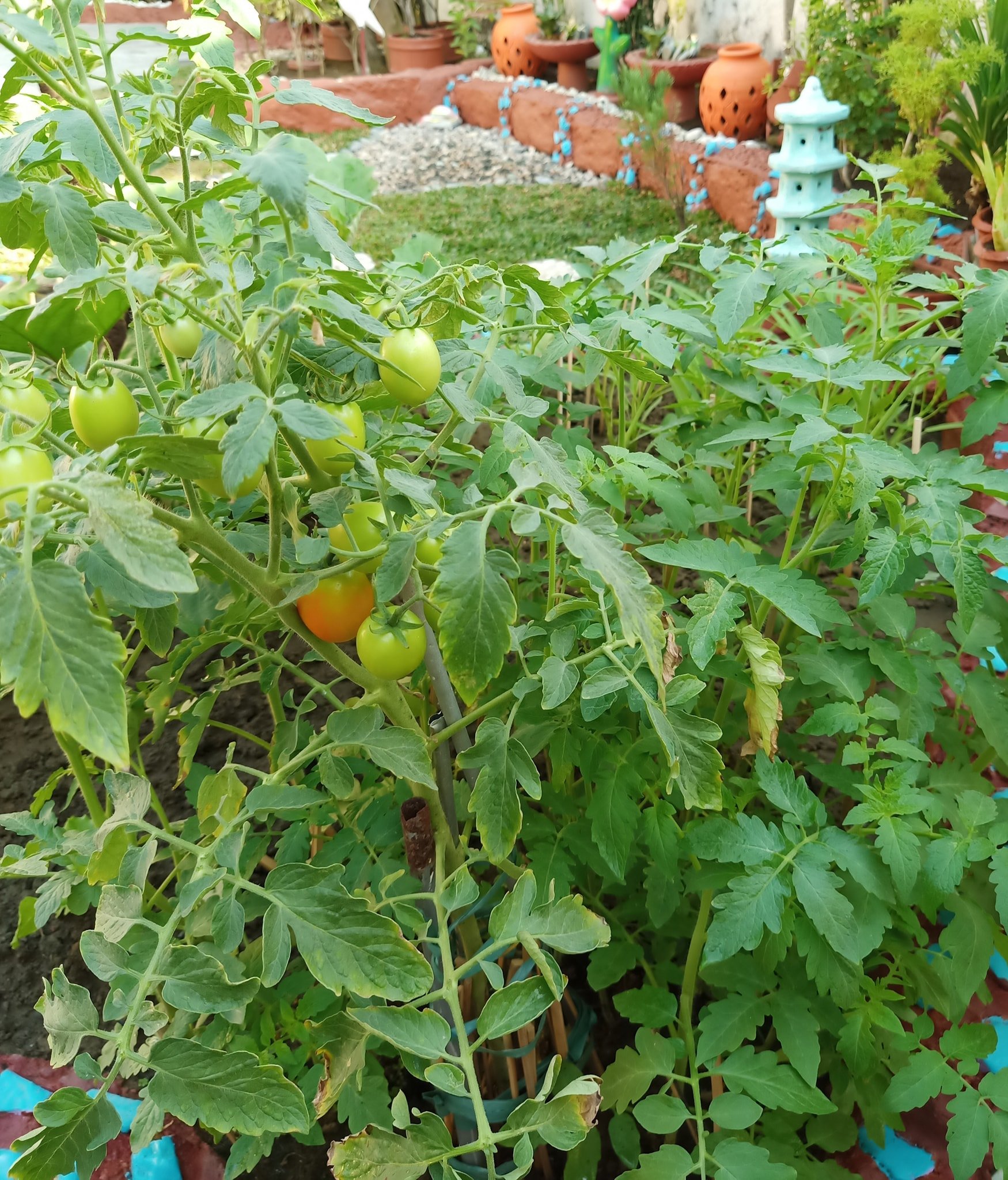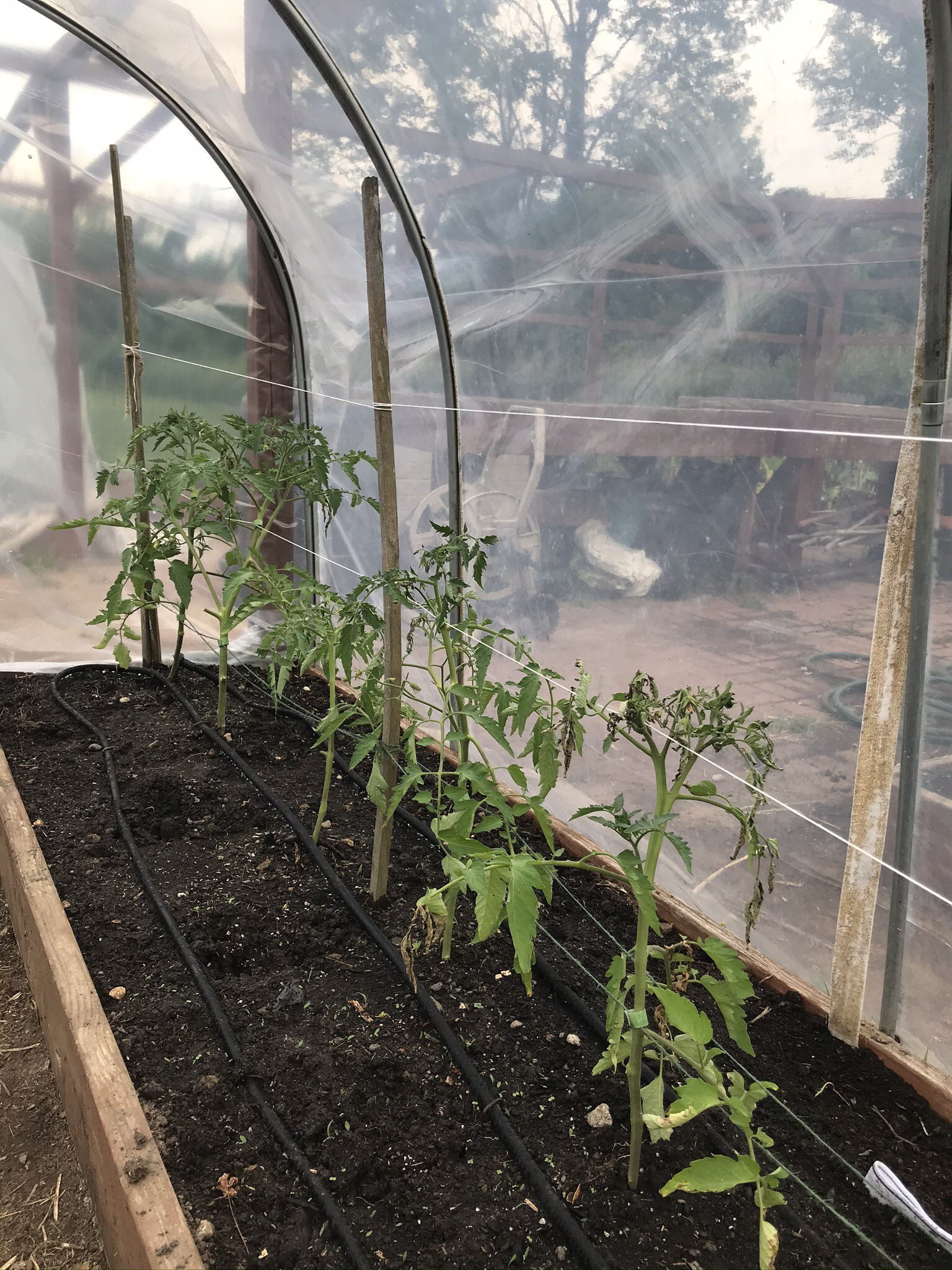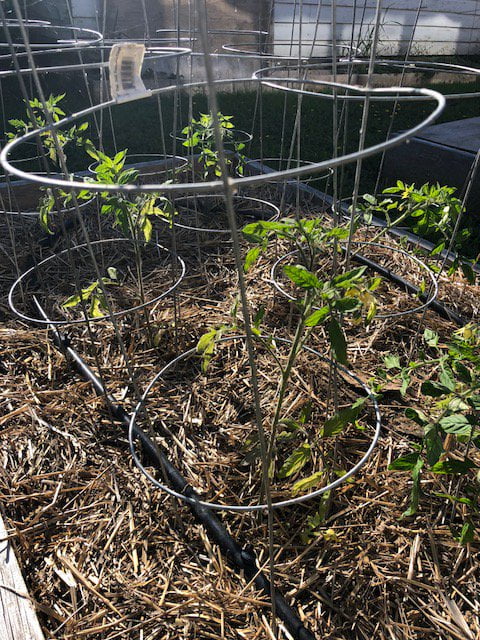
Growing tomatoes at home is a rewarding endeavor, especially when you can enjoy the unmatched flavor of garden-fresh produce. While staking is the conventional method for supporting tomato plants, it’s not the only option. With the right techniques, successfully growing tomatoes without stakes can be done which will also ensure your plants remain healthy, upright, and productive.
This guide covers all the ins and outs of growing lush, productive tomato plants without a stake.
Table of Contents
The Benefits and Drawbacks of Staking Tomatoes
Before diving into stake-free methods, let’s review the pros and cons of staking:
Benefits
- Prevents fruit from contacting soil and rotting
- Allows air circulation and light penetration for disease prevention
- Makes picking easier without bent, tangled plants
- Optimizes plant energy going to fruit instead of stems and leaves
- Keeps plants tidy and takes up less space
Drawbacks:
- Materials can be expensive (cages $10-25, stakes & ties $15+)
- Installation is time-consuming and labor-intensive
- Stakes and ties must be removed at season end
- Can still require pruning for best results
- Not compatible with all vine types
For many gardeners, the trade-off is worth it for upright plants and pristine fruit. However, with the right preparation and care, healthy tomato bushes can be grown stake-free.
Getting Started Growing Tomatoes Without Stakes

When planning a staking-free tomato patch, start with strategy:
Choose compact, determinate varieties – These bushy plants reach 2-4 feet tall and ripen fruit within a short window, unlike indeterminate types that continue growing. Good determinate options include Celebrity, Roma, and Carmello.
Space plants far apart – Give each tomato bush about 4 feet of room to prevent crowded, sprawling plants. This also allows for good air circulation.
Use raised beds – Elevated planting sites like beds keep fruit off the ground. Ample drainage prevents diseases like blight.
Mulch heavily – Spread 3-4 inches of straw, leaves, or other organic matter to prevent weeds, retain moisture, and keep fruit clean.
Prune selectively – Judicious pruning channels plant energy into ripening fruit, not unchecked growth. But take care not to over-prune.
With smart prep work, your tomato plants will have a healthy head start on growing strong even without stakes. Now let’s get into managing unrestrained tomato bushes.
Growing Tips For Stake-Free Tomato Plants
Once your tomato transplants are settled, use these organic techniques to keep them under control:
Pinch suckers and prune leaves – Remove new shoots (suckers) to direct growth into two or three main stems. Prune lower leaves to allow airflow.
Check for hornworms – These voracious pests nibble stems and can damage unsupported plants. Hand pick them off.
Use row cover fabric – Lightweight fabric keeps plants warm for faster growth but can be removed once flowers appear for pollination.
Add calcium supplements – Blossom end rot comes from calcium deficiencies. Add eggshells or natural supplements to prevent it.
Monitor water carefully – Keep soil consistently moist but not saturated to minimize risk of disease. Add mulch to retain water.
Rotate crops each year – To disrupt disease cycles, avoid planting tomatoes in the same spot as last year.
With attentive care and the right varieties, tomato bushes can thrive without stakes. But one important question remains.
Does Staking Improve Tomato Yields?

Given the extra effort involved with staking tomatoes, does it actually increase harvests compared to unstaked plants?
According to research, staking can boost yields by:
- Keeping fruit elevated off wet ground to reduce rot
- Allowing better air circulation and light penetration
- Supporting larger plants that can accommodate more tomatoes
- Making fruit easier to spot for picking ripe tomatoes
However, skilled growers using the right stake-free strategies – selecting compact varieties, spacing generously, mulching heavily, and pruning thoughtfully – can achieve similar productivity.
The verdict? For higher yields from larger indeterminate varieties, staking is likely beneficial. But determinate bush tomatoes planted properly with supportive care can produce abundant harvests without stakes.
Tips for Staking-Free Success

Growing tomatoes without supports may seem risky, but these pro tips set you up for a bountiful stake-free harvest:
- Train 1-3 main stems using wide tomato cages or trellises rather than single stakes. This offers flexibility and support.
- Try low-growing dwarf and patio varieties like Tiny Tim and Patio Choice Yellow. They only reach 12-18 inches tall!
- Add bean teepees or heavy garden netting over plants as unobtrusive supports that don’t need installation.
- Plant tomatoes near sturdy corn stalks or sunflowers to use as natural stakes without fuss.
- Add soil amendments like compost and calcium to nourish plants that must balance fruit weight.
- Remove lower leaves gradually over the season to allow air circulation and prevent disease.
With smart strategies, the answer to “Can you grow tomatoes without staking them?” is a resounding yes! Your harvest may not look picture-perfect, but the flavor will be incredible. Growing staking-free tomatoes is totally possible with the right techniques.
While most gardeners stake tomatoes by habit, it is possible to grow them without vertical supports using smart strategies. With determinate varieties, sufficient space, preventative mulching and pruning, and protective measures like row covers, tomato bushes can remain contained and productive. Monitor plants closely and provide adequate nutrients for the best results. With reasonable expectations for appearance, a stake-free tomato crop can yield plenty of fresh, juicy tomatoes. So don’t be afraid to break free of stakes and try training those tangly tomato vines to grow upright on their own!
